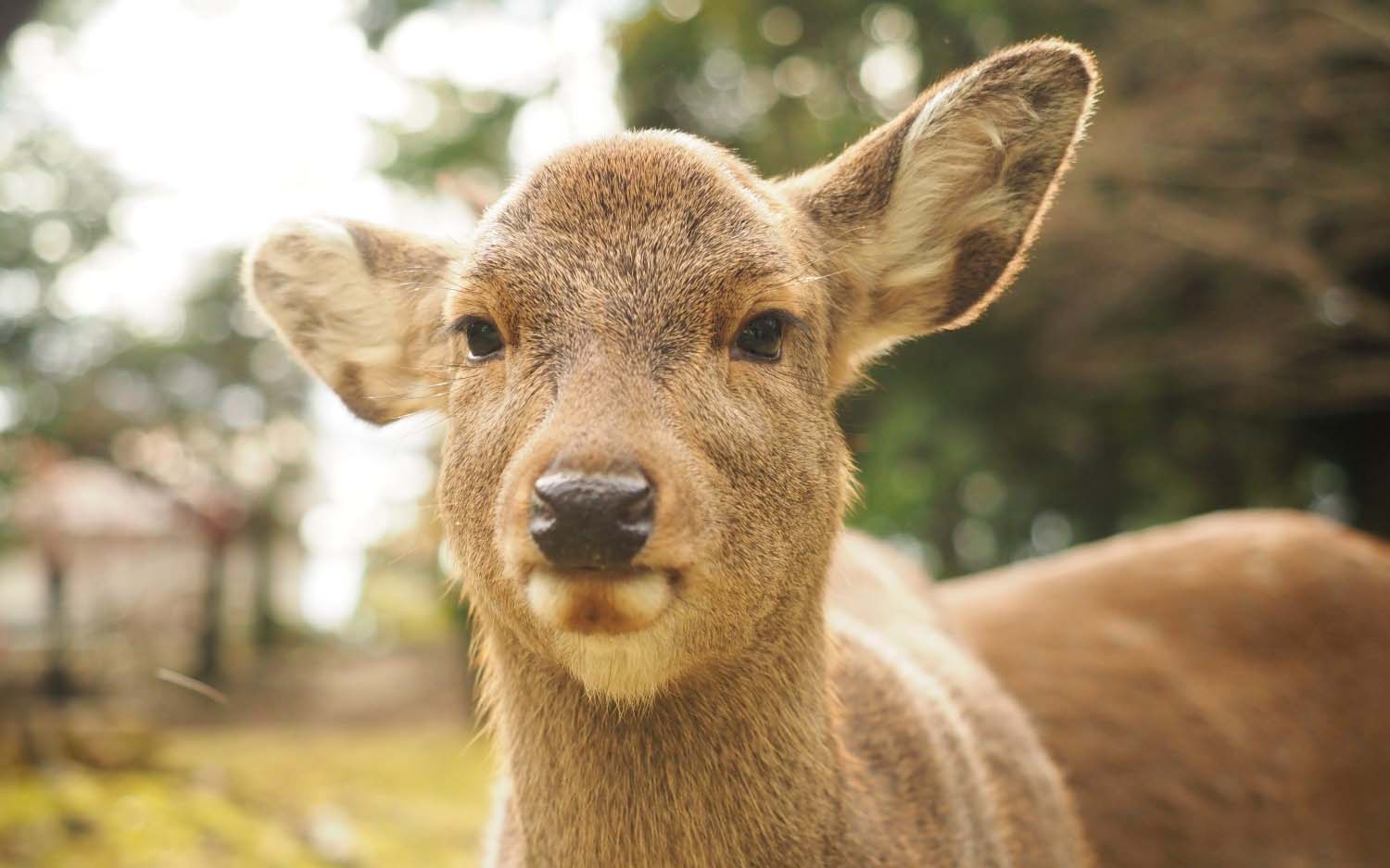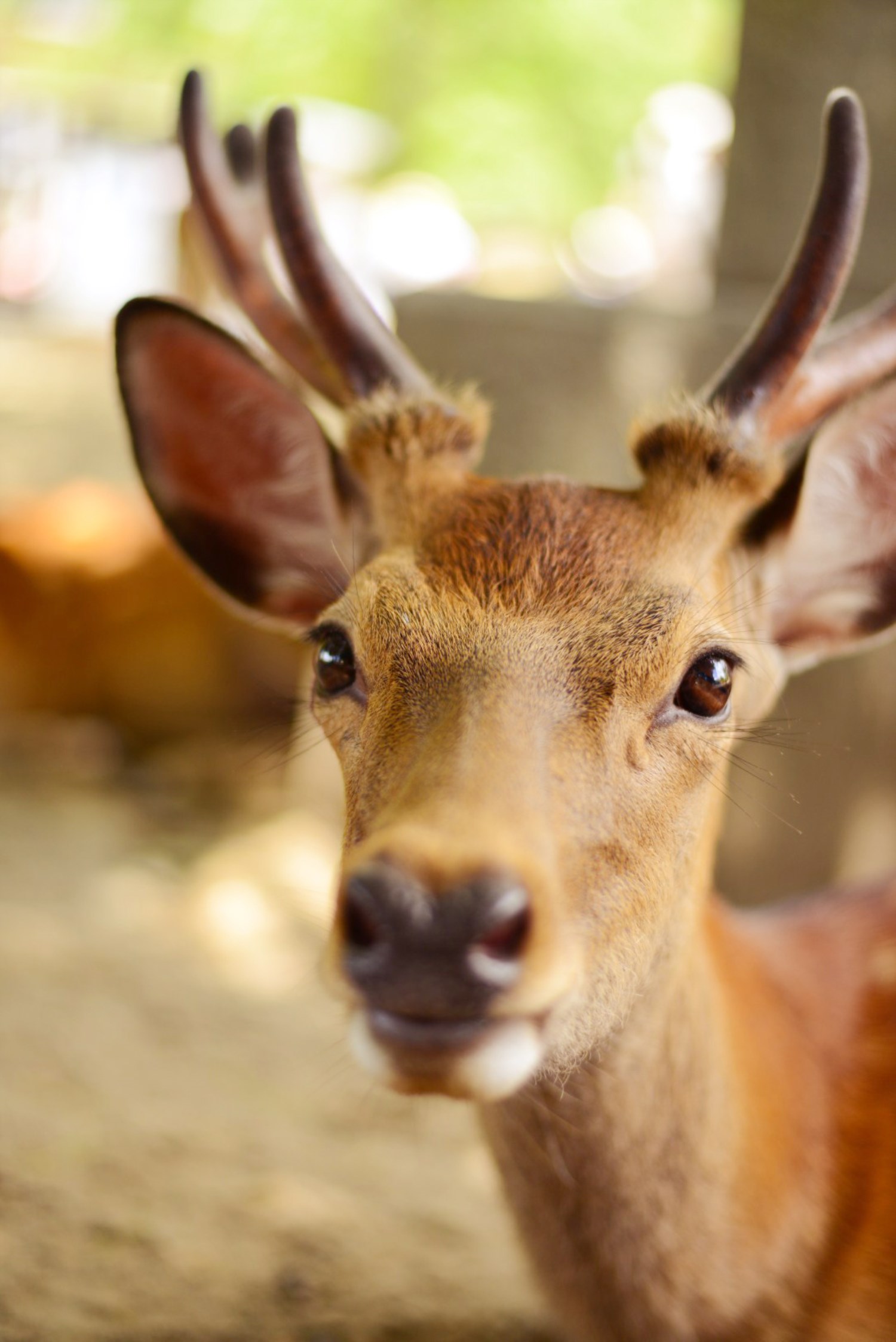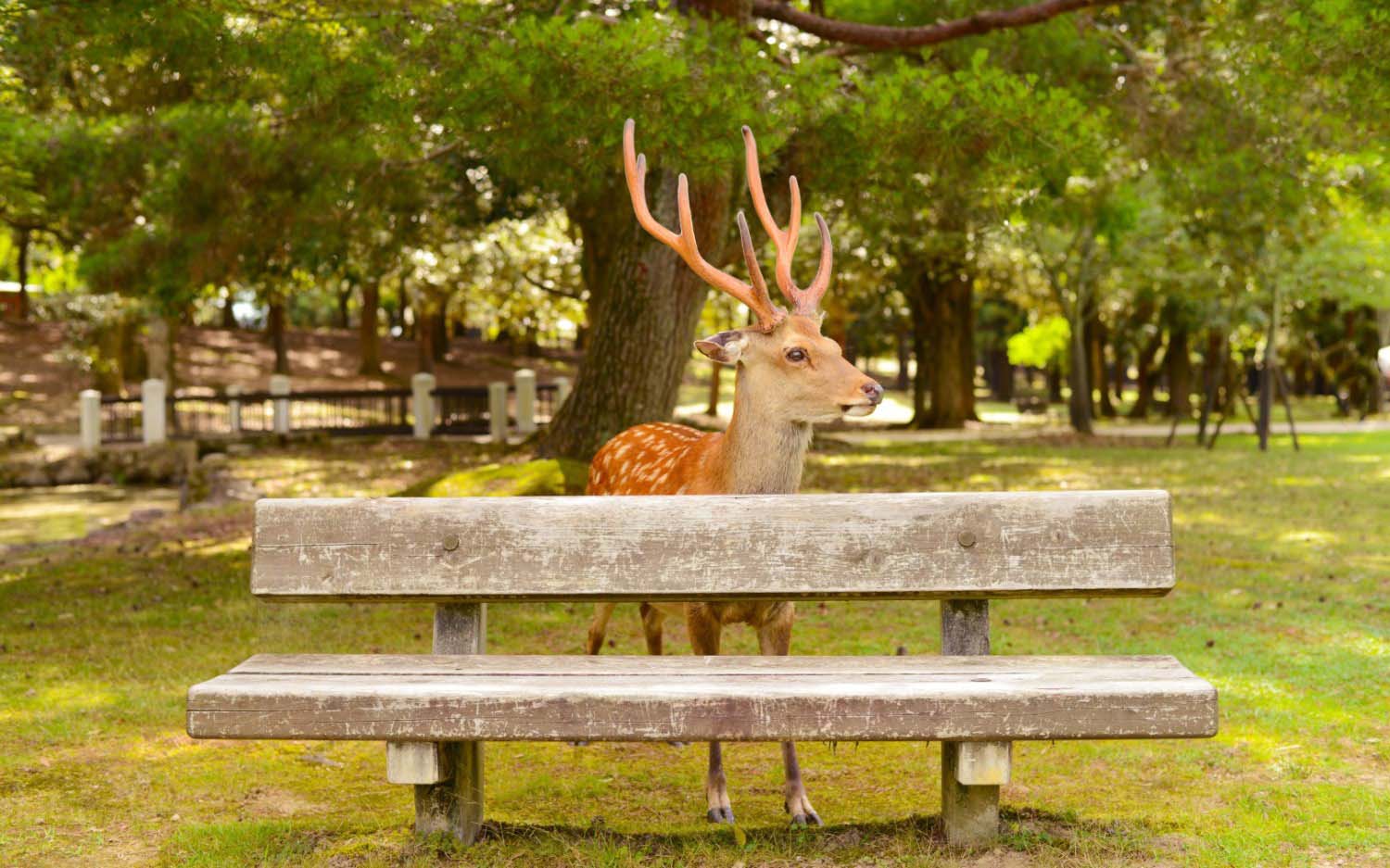Japan’s Cutest Day Trip Is Just Outside Osaka

Lisa Michele Burns is a travel and underwater photojournalist. She…
Japan is filled with cultural wonders, traditions, and limitless quirky trends. It also ranks pretty high on the cuteness scale.
One place that embodies all of the above is Nara Park, which is home to over 1200 roaming deer, thought by locals to be the messengers of gods. Just a short train ride from Osaka, visitors to the park can feed and pet deer, and picnic amongst them as they nibble their way beneath maple trees and past historic temples.



These spotted cuties, known as Sika Deer, are native to Japan and have been considered national treasures since the end of WWII. Year round, you’ll find them happily wandering the forest or Nara’s city streets, or even taking a dip in the small ponds and streams scattered around the park.


In late March and early April, cherry blossoms turn Nara Park into a pink-petal wonderland. With more than 1700 cherry trees, the park is a hanami (“cherry blossom viewing”) heaven and the deer add to the fairy tale aesthetic. During cherry blossom season, the Japanese enjoy parties and picnics beneath the trees, and those celebrating in Nara get the extra addition of hungry deer keen to join the festivities.
While they’ll gently nudge you for any kind of food, be prepared for some very hungry deer coming your way if you happen to purchase one of the Shika-senbei snacks. The deer biscuits are sold in little stalls around the park and the deer know exactly where to hang out to up their chances of having some tossed in their direction. The biscuits are safe for them to eat and it’s a great way to capture that perfect photo.

A word of warning, though: park authorities have recently issued warnings to tourists about impatient deer, so ensure you’re confident around animals before you purchase the biscuits. To avoid becoming a snack yourself, don’t tease. Instead, give the biscuits to the deer as soon as they approach and show them your empty hands after so they know there’s no more where that came from.
Alternatively, if you happen to be visiting in November, you can see the park turn to red and yellow as autumn casts its spell. The weather is beautifully chilly and the skies are typically clearer, making it the perfect time to explore the park.


Todaji, also known as the Great Eastern Temple, is also located within the park and is the main drawcard of Nara (apart from the deer). Inside the temple, which happens to be the world’s largest wooden building, you’ll find Daibutsu, a giant bronzed Buddha.



One pillar inside the temple has a small hole in it, apparently the same size as the Daibutsu’s nostril, and it’s thought that, if you can squeeze through, you’ll be granted enlightenment in your next life. It’s quite fun to stand and watch people twist and turn as they attempt to fit through a hole that’s clearly only meant for kids!
Around the park, you’ll find museums, teahouses and pagodas, each of which provide a unique insight into Japanese culture – if you can break yourself away from the deer of course.

Or, if you’re keen to explore after dark, the park doesn’t close, though the deer are less active and you’ll mainly find them resting. Unless you have some Shika-senbei in your pocket, that is!

How To Get There
Nara is just a 40-minute train ride from Osaka, making it the perfect day trip.
You can take either the JR Yamatoji Line from Osaka Station or the Kintetsu Nara Line from Osaka Namba Station, which will have you arriving into Nara within 40 or 60minutes. If you’re travelling on the JR Pass, you can only use this for the JR Yamatoji Line.
Nara Park is a 20 to 30-minute walk from the JR Nara Station. Or, to skip the stroll, you can take a taxi direct to Todaji Temple and still see the deer.
Todaji Temple has an entry fee of $ (¥500) and is open daily from 7:30 to 5:30pm between April and September. Times vary between 8am and 5pm through the rest of the year.
(All images courtesy of Lisa Michele Burns)
[qantas_widget code=KIX]Check out Qantas flights to Osaka.[/qantas_widget]Lisa Michele Burns is a travel and underwater photojournalist. She publishes a guide to the world's most photogenic locations and outdoor experiences at The Wandering Lens and regularly hosts photo tours in destinations like Iceland, Japan and a little closer to home in Australia.








